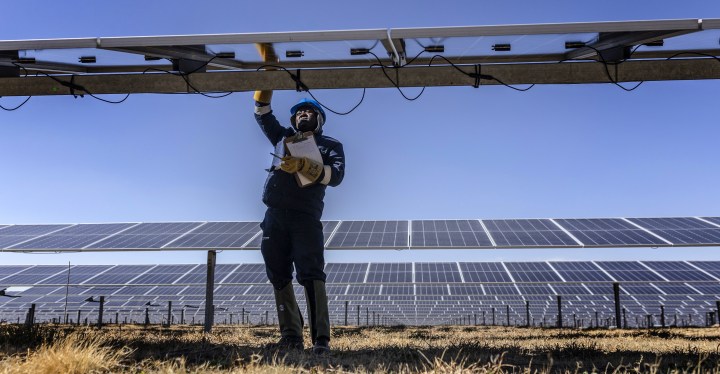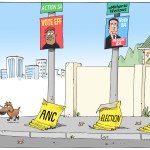GREEN ENERGY
SA mining sector leads renewable drive, headwinds include skills shortage and mineral rights opacity

The mining sector is leading South Africa’s private sector renewable energy drive. But it is facing some of the headwinds that already afflict the sector, notably a critical skills shortage and lack of transparency around mineral rights which hold the key to access the land needed for such projects.
The Minerals Council SA estimates that the private sector in total has more than 100 energy projects valued at more than R150-billion to generate 10.4GW of electricity – close to half of Eskom’s functioning capacity.
Within that total, the mining sector has 7.5GW of renewable energy projects in various stages of development.
The mining industry has 441MW of operational renewable energy plants, representing about 4% of industry electricity consumption.
Three more projects totalling 370MW will be commissioned before mid-2024, representing another 3% of energy consumption.
This means that the industry which laid the foundation for Africa’s most industrialised economy will light the way out of the power shortages that are constraining industrialisation and economic growth.
Harmony Gold is a case in point.
Deep-level gold mining is extremely energy-intensive, and the industry has to navigate the challenges of “load curtailment” while absorbing rising costs for Eskom’s unreliable supplies.
Harmony last year commissioned solar photovoltaic plants in the Free State to provide 30MW of power and has another 137MW in the pipeline.
The company sees R425-million in annual savings from these projects as well as a reduction in what is known as “load curtailment”.
“We work very closely with Eskom … they don’t just switch us off. We do load curtailment so they give us a target in terms of what we cut back on, and we oblige,” Harmony CEO Peter Steenkamp told Daily Maverick in an interview on the sidelines of the Mining Indaba in Cape Town.
“We decide what we will stop and what we don’t stop. We haven’t had any unsafe conditions or lost production because of Eskom in the last couple of years.”
Still, it’s a pain in the butt.
“I must stress that it’s not easy because someone must constantly make a call. You are running a control room environment where somebody is on 24/7 standby to make these calls,” Steenkamp said.
Opacity and skills shortage
Another pain in the butt is getting such projects off the ground. Those timelines have improved, but some of the reasons for the delays are revealing.
Take the example of Seriti Green, a subsidiary of coal producer Seriti. It is currently building Africa’s largest wind farm in Mpumalanga, which will generate 155MW of power – the first phase of 900MW in renewable energy projects in the province.
One problem that such projects face is the lack of transparency around who holds coal rights in Mpumalanga. This is important because possessing mineral rights sterilises ground that is needed for solar or wind projects.
Read more in Daily Maverick: Mpumalanga coal carve-up threatens roll-out of renewable energy projects
This underscores the urgency of South Africa getting a functional mining cadastre up and running, a process that will still likely take at least another year.
“It took us two years through a Paia (Promotion of Access to Information Act) application to understand who had the mineral rights,” Peter Venn, Seriti Green CEO, told Daily Maverick in an interview.
Big gold producers such as Harmony and Gold Fields – which also has a solar plant up and running – don’t have that obstacle because of the amount of land they own around their operations.
Venn said another challenge to renewable projects was a critical shortage of skills. Solar panels and wind farms don’t erect themselves.
“We were building a project in northern Queensland and the main language spoken on site was Afrikaans because many of the wind farmers from here went off to Australia when nothing was happening here,” Venn said.
“There is a massive skills shortage here for renewable projects,” he said.
Examples include electricians and engineers of various stripes – civil, mechanical, electrical – who are needed to build a wind farm.
And it goes beyond these obvious skill sets.
“There are not enough lawyers, not enough bankers. Try getting a renewable energy lawyer on the phone … it will take three weeks,” Venn said.
Then there is the unfolding dysfunction at Home Affairs.
“We’re using Chinese turbines and the Chinese guys just can’t get visas,” Venn said.
All of this is worrying as South Africa’s economy needs to decarbonise to remain competitive and to make the air in Mpumalanga less toxic. But in the face of significant headwinds, renewable projects are seeing the light of day. DM



















Old mining sector caused untold environmental damage over many years…
New mining for resources needed for green “renewables”: “Hold my Beer”